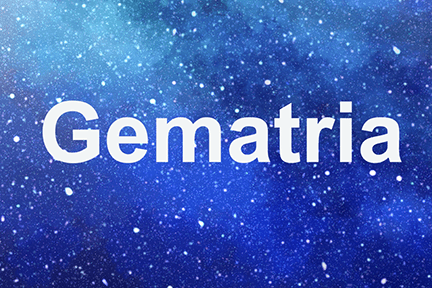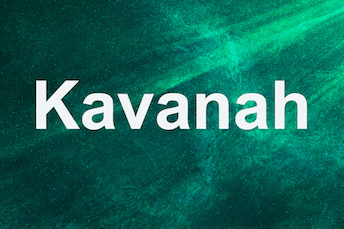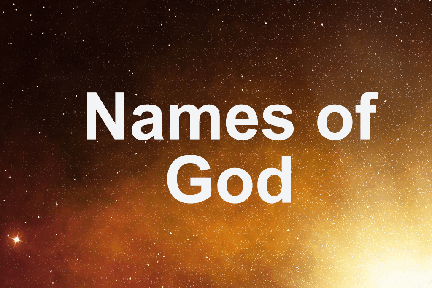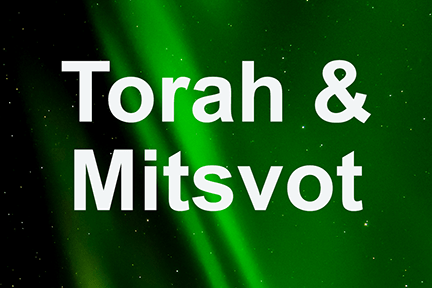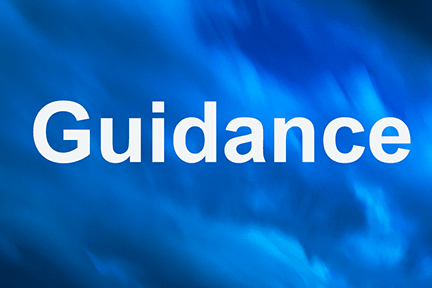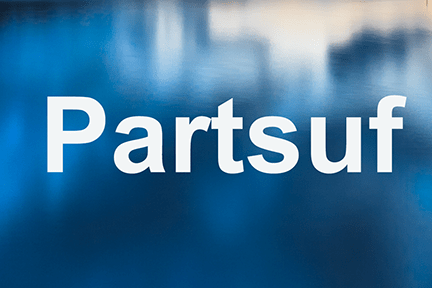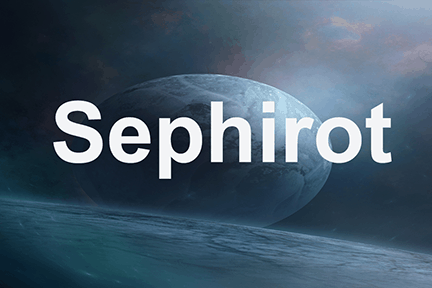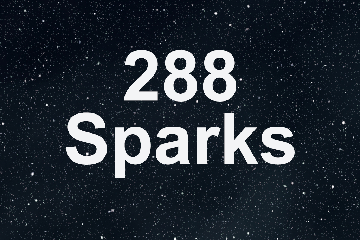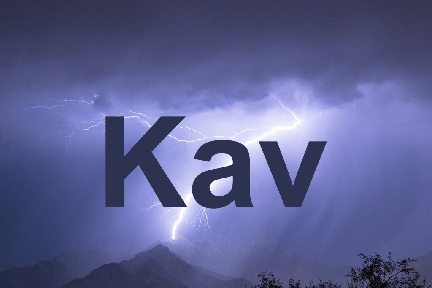La Gématria est un des différents systèmes d’interprétation des significations cachées de la Torah, où les valeurs mathématiques des lettres, et des mots, sont calculées pour trouver une similitude ou une complémentarité. Chaque lettre ayant sa propre valeur numérique.
| Lettre | Nom | Valeur |
| א | Aleph | 1 |
| ב | Beit | 2 |
| ג | Gimel | 3 |
| ד | Dalet | 4 |
| ה | He | 5 |
| ו | Vav | 6 |
| ז | Zain | 7 |
| ח | ‘het | 8 |
| ט | Tet | 9 |
| י | Youd | 10 |
| כ | Khaf | 20 |
| ל | Lamed | 30 |
| מ | Mem | 40 |
| נ | Noun | 50 |
| ס | Samekh | 60 |
| ע | ‘ain | 70 |
| פ | Pey | 80 |
| צ | Tsadey | 90 |
| ק | Kouf | 100 |
| ר | Resh | 200 |
| ש | Shin | 300 |
| ת | Tav | 400 |
Les lettres finales ont également leurs propres valeurs numériques :
| Lettre | Nom | Valeur |
| ך | Khaf final | 500 |
| ם | Mem final | 600 |
| ן | Noun final | 700 |
| ף | Pey final | 800 |
| ץ | Tsadey Final | 900 |
Il y a sept principaux types de Gematriot :
• Ragil — régulier
• Katan — petite valeur
• HaKlali — la valeur au carré
• Kolel — régulier plus une valeur pour une, ou toutes les lettres
• HaKadmi — régulier plus la valeur des lettres précédentes
• HaPerati — chaque lettre au carré
• Milouy — Somme des épellations
1 — Ragil : les nombres de lettres sont comme suit :
| De | A | Valeur |
| א | ט | 1 – 9 |
| י | צ | 10 -90 |
| ק | ת | 100 – 400 |
| ך | ץ | 500 -900 |
Ex : הארץ = 1106
2 – Katan : les dix et les centaines sont réduits à un chiffre.
| De | A | Valeur |
| א | ט | 1 – 9 |
| י | צ | 1 – 9 |
| ק | ת | 1 – 4 |
| ך | ץ | 5 -9 |
Ex : הארץ = 17
3 – HaKlali : la valeur Ragil du mot est au carré.
Ex : הארץ = 1106 * 1106 = 1 223 236
4 – Kolel : la valeur Ragil du mot + le nombre de lettres, ou + 1 pour le mot.
Ex : הארץ = 1106 + 4 = 1110
or 1106 + 1 = 1107
5 — HaKadmi : chaque lettre a sa valeur de Ragil plus le total de toutes celles qui le précèdent.
| De | A | Valeur |
| א | ט | 1 – 45 |
| י | צ | 55 – 495 |
| ק | ת | 595 –1495 |
| ך | ץ | 1995 – 4995 |
Ex : הארץ = 15+1+795+4995 = 5806
6 – HaPerati : chaque lettre est au carré.
Ex : הארץ = 5 * 5 = 25, 1 * 1 = 1
200 * 200 = 40 000, 900 * 900 = 810 000 Total = 850 026
7 — Milouy : la somme de l’épellation de chaque lettre.
| Lettre | Milouy | Valeur |
| ה | הא | 6 |
| א | אלף | 111 |
| ר | ריש | 510 |
| ץ | צדי | 104 |
Ex : הארץ = 731
Par les Gematriot, nous voyons que chaque lettre et mot a une signification dynamique au-delà des simples définitions. La Gematria est seulement une des manières secrètes pour interpréter les significations cachées dans la Torah.
Il y a également des systèmes de permutation où des lettres sont remplacées par d’autres dans un ordre établi comme « ATBaSH » où la première lettre est remplacée par la dernière, la seconde par l’avant-dernière, etc. « Notarikon », où les initiales de différents mots font un nouveau mot, ainsi que plusieurs autres systèmes.
To reach a more active role in the unification of the different configurations, one needs to understand and concentrate when praying. There are different levels of Kavanah – concentration. The basic Kavanah is to understand the words, and concentrate on the intention of the blessing or the prayer. The higher level is to meditate on the different systems of permutation of names and configurations, to get a particular action or result. Each word or part of the prayers has its own action or purpose. These actions are initiated by concentrating on the different names of G-od, their appellations and other arrangements of the Autiot – letters.
When saying a blessing with the Kabbalistic meditation on the appropriate words or names, we act and participate directly on the Tikun – rectification of the action or thing being blessed. The purpose of most of the blessings recited before and after eating or drinking is to liberate the souls that have been reincarnated in these comestible elements.
When praying, it is important to be part of a Minyan – a group with a minimum of ten men. Without this minimum number, the Kadish and other important parts of the prayer cannot be recited. For the morning prayer, one also has to wear a Talit – praying shawl, and Tefilin – phylacteries wrapped on the head and left arm.
As we can see, every element of the prayers, whether physical or spiritual, has very deep and essential meanings to give important forces and power to the one praying. It is a pity that these powerful and beautiful rituals are taken mistakenly for “folkloric recitations” in an incomprehensible language, part of “one has to do” type of thing when attending a prayer in a synagogue.
By making the effort to understand the deeper meanings of these rituals, one will discover a whole new definition and reason for his special relationship with the higher worlds and his Creator
The forces or energies that make or influence the guidance are also identified or described as the different names of God.
The main names are:
- Y-H-V-H – י-ה-ו-ה
- Ein Sof – אין סוף
- Adona-y – אדנ- י
- Ahy-h – אהי-ה
- Elohi-M – אלוה-ים
Ein Sof– אין סוף
Ein Sof – The without limit or Infinite, is the most used Name for G-od in the Kabbalah. Since His light or energy cannot be measured by any definition or limiting terms, we therefore use the name “Ein Sof” (without limit) since we know and admit that G-od and the concept of limitlessness or without end is beyond our human comprehension. This name represents kindness.
Adona-y – אדנ- י
This name represents the feminine aspect of G-od; it has an aspect of rigor and is represented by the Sephira מלכות. It also represents the feminine configurations of Ra’hel and Leah. Since men’s prayers are first directed to the Sephira מלכות before they can be transmitted higher, this name also represents the closest relationship between man and his Creator.
Ahy-h – אהי-ה
This name represents the higher masculine aspect of G-od, and is represented by the Sephira כתר. It shows kindness together with the awe of G-od.
Elohi-M – אלוה-ים
One of the names of G-od, represented by the Sephira גבורה. In general, it denotes rigor in the actions of G-od.
Y-H-V-H (ה–ו–ה–י)
The primary name of G-od reveals kindness and mercy, represented by the Sephira תיפארת. All that was created has its origin in these four letters. Most of the guidance is manifested by this name and its different spellings that make new individual names.
By spelling each one of the four letters of this name differently, the numerical value of the name changes, and each one of these possibilities becomes different in its nature and actions.
| בן | BaN | 52 |
| מה | MaH | 45 |
| סג | SaG | 63 |
| עב | A”V | 72 |
The four Miluyim (spellings) are:
| ה | ו | ה | י | ||||
| עב | הי | ויו | הי | יוד | |||
| 15 | 22 | 15 | 20 | = | 72 | ||
| סג | הי | ואו | הי | יוד | |||
| 15 | 13 | 15 | 20 | = | 63 | ||
| מה | הא | ואו | הא | יוד | |||
| 6 | 13 | 6 | 20 | = | 45 | ||
| בן | הה | וו | הה | יוד | |||
| 10 | 12 | 10 | 20 | = | 52 |
Each name can also be divided and subdivided to describe even more precisely the different outcomes and manifestations of these energies:
‘A”V of ‘A”V, SaG of ‘A”V, MaH of ‘A”V …
BaN of BaN of SaG, SaG of MaH of ‘A”V etc.
The lights or forces that are clothed in these letters or their combinations emanate masculine or feminine configurations that make the guidance of the worlds.
Tikoun dans la Kabbalah est une notion très importante. Elle démontre, en quelque sorte, que tout ce qui a été créé avec une possibilité de déficience a également un potentiel d’être rectifié. En Hébreu, le mot « Tikoun » a différentes significations ; il peut signifier réparation ou rectification, mais également fonction, relation ou action.
Il y a différents types de Tikounim :
– Tikounim (réparations) qui ont eu lieu dans les premières émanations pour réparer les mondes.
– Tikounim (rectifications – relations) pour la construction et les interdépendances des Séphirot et des configurations.
– Tikounim (actions – fonctions) de certaines configurations pour la direction du monde.
– Tikounim (rectifications) pour les âmes.
Tikounim pour la réparation des mondes
À la création, quand de la configuration d’Adam Kadmon ont émergé les dix Séphirot de l’aspect féminin de BaN (52), et que les sept Séphirot inférieures se brisèrent. Pour soutenir les récipients de ces Séphirot après qu’ils se soient cassés, 288 étincelles de leur lumière originale descendirent pour les maintenir vivants.
Ce dommage important ; Shvirat HaKélim – cassure des récipients devait être réparé. Un premier Tikoun fut d’aider dans la remontée de certaines de ces 288 étincelles tombées et de réparer les récipients qui s’étaient brisés en tombant, afin qu’ils puissent retourner à leurs lumières respectives.
Le Tikoun pour réparer les Séphirot après ce dommage fut l’union des Séphirot masculines de MaH (45) avec les Séphirot féminines de BaN (52) en arrangements complexes. Ceci afin de permettre à BaN féminin d’être réparé par MaH masculin, et pour que les Séphirot puissent se tenir dans l’arrangement de trois colonnes, nécessaires pour la direction de bonté, rigueur et miséricorde.
Tikounim pour la construction des configurations
Les Tikounim pour la construction des Partsoufim – configurations sont réalisés par le Zivoug (union) des configurations supérieures masculines et féminines, où la configuration inférieure passera par une période de gestation à l’intérieur de la configuration féminine plus élevée, suivie de sa naissance.
Le masculin correspond à ‘Hesed – bonté, et au nom de MaH (45), le féminin à Gevourah – rigueur et au nom de BaN (52).
Au début, pendant la période de gestation quand la configuration inférieure est à l’intérieur de la Noukva supérieure (la configuration féminine au-dessus), les lumières féminines et masculines de l’aspect de BaN et de MaH construisent et donnent la force requise pour la naissance de la configuration inférieure. Ce n’est qu’une fois complètement arrangée et complétée, qu’elle est révélée. Il y a ensuite une période d’allaitement, et puis une première et deuxième enfance et croissance.
Tikounim des configurations pour la direction
Il y a également les Tikounim des différentes configurations qui sont leurs actions, illuminations, et interdépendances, afin d’influencer la direction des mondes. Ces Tikounim résultent en diverses illuminations d’intensités différentes, selon le temps et les actions de l’homme. Les principaux Tikounim des configurations sont ceux des configurations Arikh Anpin, Zeir Anpin, et Noukva. Allégoriquement, ces Tikounim sont de la tête, ou du visage des configurations.
Tikounim de la configuration Arikh Anpin
Le premier et plus important Tikoun est celui des trois premières Séphirot de la configuration Arikh Anpin. Ces trois Séphirot sont les racines de la direction de bonté, rigueur et miséricorde. Pour influencer la direction, des illuminations sont projetées d’une ou plusieurs de ces Séphirot aux configurations Abah et Imah, et de là, au Mo’hin (force directive) de la configuration Zeir Anpin.
Des lumières émanent de sa Séphira ‘Hokhma, elles s’épanchent vers le bas et se divisent en treize. Elles se nomment les treize Tikounim de la Dikna — barbe d’Arikh Anpin.
D’autres Tikounim – illuminations de la configuration Arikh Anpin sont les lumières requises pour l’accomplissement et l’abondance. Cependant, la direction provient des lumières qui émanent de sa Dikna — barbe.
Tikounim de la configuration Zeir Anpin
Les émanations des lumières supérieures sont transmises selon un ordre précis aux configurations inférieures. Elles viennent finalement à la configuration Z’A qui, après émanation de ses propres lumières, s’unira aux configurations féminines Ra’hel ou Leah et transmettra par elles ces émanations aux mondes, pour faire la direction.
Pour la configuration Z’A, les Tikounim sont exprimés par les lumières qui sortent de lui, tels que ses cheveux — illuminations de sa tête ou de son visage.
Ces émanations s’appellent cheveux ou barbe, car ce sont des lumières qui se diffusent par des conduits individuels.
Ces Tikounim – actions sont semblables à ceux de la configuration Arikh Anpin, mais avec quelques différences, ils sont plus de l’aspect de Gevourah, alors que ceux d’Arikh Anpin expriment la bonté. Neuf au début, ils deviennent treize et agissent en tant que principe de bonté pour la direction de la justice.
Tikounim (rectifications) pour les âmes
Un Tikoun pour une âme est sa rectification en raison de son manque, ou pour la purifier de ses défauts. Le Tikoun pour l’âme est réalisé par le Gilgoul (réincarnation) et par le ‘Ibour (attachement). En accomplissant ce qu’il n’a pas accompli des 613 Mitsvot, en rectifiant un acte ou des dommages qu’il aurait causés par ses actes négatifs, l’homme fait le Tikoun nécessaire de son âme, qui peut maintenant s’élever et ainsi rejoindre sa source.
Il y a différents types de Tikounim — rectifications pour l’âme, car chacun de ses niveaux nécessite son propre Tikoun. La plupart des hommes ont seulement le niveau le plus bas – Nefesh, et s’ils font le Tikoun approprié, ils acquerront les niveaux suivants, mais un à un. Le Tikoun d’un niveau supérieur ne peut être accompli qu’après tous ceux des niveaux précédents.
Tant que l’homme entreprend le Tikoun de son âme en trois réincarnations, il se réincarnera et retournera autant que nécessaire pour accomplir son Tikoun. Cependant, s’il maintient son mauvais comportement, il ne reviendra pas après la troisième réincarnation et cette âme sera détruite sans plus de chance de Tikoun.
Tikoun ‘Olam — Tikoun général
Le mal disparaîtra de ce monde et se transformera en bonté, quand tous les Tikounim – rectifications seront accomplis. Le Tikoun général est de rapporter le monde à son état original d’avant les dommages provoqués par la rupture des récipients. Un état d’harmonie où la bonté, la générosité et la paix règnent, et où les rigueurs sont apaisées.
Quand toutes les étincelles de sainteté tombées seront remontées à leurs origines en raison de tous les comportements positifs et des actes des hommes.
En conséquence, la Sitra A’hra (force négative) ne pourra plus s’attacher et se nourrir des lumières plus élevées, et cessera d’exister. D. a donné à l’homme un rôle important dans le Tikoun ‘Olam — Tikoun général. Il lui appartient maintenant de reconstituer et faire les réparations nécessaires au monde, en accomplissant Ses commandements, et en apprenant les voies de son Créateur.
L’objectif final est de comprendre et d’accomplir la volonté de D., afin de mériter une proximité à Sa présence, et finalement aider et participer à la révélation de Son unicité dans le monde.
The Kabbalah is the mystical and esoteric explanation of the Torah. All the profound secrets explained in the Kabbalah, are alluded to in the letters, words and different stories narrated in the Torah. These stories as well as the shape of the letters, the vowels, and the cantillation notes are a Levush – outer garment on the real message and meaning of the Torah. The different systems of Sephirot and configurations of lights and energies are represented by the people and events in the Hebrew texts of the Torah. Therefore, the translations only cover the most basic meaning and can not reach into the real purpose and signification of the Torah as explained in the Zohar:
“Rabbi Shimon said: Woe to this man who says that the Torah came to simply relate stories in an ordinary language, because if this is so, even in these times we could make a Torah from ordinary tales, and even nicer than from those [tales]. If the Torah came to explain worldly subjects, even the governors of the [present] world have more interesting stories. If so, let’s follow what it [tale] says and make a Torah of it in the same way. But really, all that the Torah says is of very high nature, and of supernal secrets.
Therefore, the story in the Torah is the garment of the Torah. The one that thinks that this garment is itself the Torah and that there is nothing else, let his soul swell and have no part in the world to come. For this reason, King David said: (Tehilim, 119. 118) “Open my eyes so I may glaze the wondrous things in your Torah”. Meaning what is under this garment of the Torah.
(Zohar, Bamidbar, Behalotekha 58- 64)
The Torah has 248 positive and 365 negative commandments. Similarly, there are 613 veins and bones in man, 613 parts to the soul, and 613 lights in each Sephira or configuration. This number is not arbitrary, as there are important interrelations and interactions between them.
The Torah contains four levels of comprehension, of which the highest is the Sod (secret). At this level, the Torah explains to us the goal of creation, the real purpose of all the commandments and their influence on the Sephirot.
Through the knowledge of Kabbalah, we can arrive at a level of true understanding of the will of the Creator, His guidance, the creation, and in a way, “decode” the profound secrets of our holy Torah.
Mitsvot – commandments
In the Torah there are 613 Mitsvot and each one corresponds to one of the 613 veins and bones of man and to one of the 613 parts of his soul. By observing the commandments, man reinforces their strength, and by not accomplishing them, he, in a way, weakens them.
The Mitsvot were given for three main reasons:
· To reinforce and purify man
· To act on and influence the guidance
· To help accomplish the Tikun of the creation
After the breaking of the vessels and the fall of the 288 sparks, man has to act and participate in the ascent of the fallen sparks to their origin. This can be done by accomplishing the Mitsvot and by the prayers. As there are different levels of grasping the meanings and purpose of our actions, there are also various possibilities and powers of influence, depending on the understanding and intention of our acts.
The husks are the manifestations of the negative force to obstruct the lights of the Sephirot, and this degradation is caused by the sins committed by man. When accomplishing the Mitsvot, the lower beings send positive energies to weaken these husks and detach them from the higher lights, and thus remove any obstacles from the inflows and outflows of positive energies. Therefore, before each prayer and performance of the commandments of the Torah, we try to unify the masculine and feminine configurations so there will be harmony on high, and that a result or inflow of abundance will come down to us.
By understanding the profound meanings of these commandments as explained in the Kabbalah, we realize the enormous love that the Lord bestows to His creatures by allowing them to be part of this dynamic system, and by giving them the means and tools to reach the highest realms.
At first, the Creator was alone, filling all space with His energy. He was not bestowing His influence because there was no one to receive it. When He willed to create, He started to influence. Kabbalah is the only science that, in the least details, explains to us the true guidance of the world, so that we may understand His will.
The will of the Creator is to bestow goodness on His creatures; all the levels of creation and their guidance were put in place so His kindness could emanate to them, yet in such a way that they would be able to receive it.
The light of G-od is unique, of equal force, quality and beyond all description. The guidance of the world is manifested by different types of attributes such as rigor, mercy, etc. This unique light is therefore transformed or filtered by other lights, to give it various qualities or forces for a guidance based on the system of free choice, punishment, and reward.
These “transforming”, secondary lights are called Sephirot or Partsufim – configurations, and also attributes or qualities of G-od. A Sephira is, in a way, a “filter” that when the unique light enters it, transforms it into a particular force or quality by which the Creator guides the worlds.
The Kabbalah explains to us very precisely this true guidance, and how the worlds are guided by these extremely complex systems of forces or lights, which through their interactions provoke chain reactions that impact directly upon man and the worlds. Each one of these reactions has numerous ramifications with many details and results.
This complex system of forces or lights are the different Tikunim (actions) and Zivugim (unions) of the Sephirot and configurations to influence and make the guidance by means of their different arrangements and amalgamations.
There are two main kinds of guidance:
– The general guidance, which is for the subsistence of the worlds, and is not influenced by the actions of men.
This guidance is by means of the encircling Sephirot.
– The variable guidance, which is on the basis of justice, reward and punishment and is dependant on time and on the actions of man.
This guidance is by the linear Sephirot that are arranged in three columns: right, left and middle, representing the guidance of the world in the manner of kindness, rigor and mercy.
The guidance is mostly influenced by the different positioning and interactions of the masculine and feminine configurations, since they have a direct effect on the measure and balance of the factors of kindness, rigor and mercy.
The masculine configurations bestow kindness, the feminine bestow rigor. By their union, different equilibriums of the two forces of kindness and rigor make the guidance. Complete rigor will be the destruction of anything not perfect, while complete kindness will permit everything without restriction. However, these two aspects are necessary for the guidance based on justice, and for giving man the possibility of free choice.
The guidance is manifested by three main attributes:
· the attribute of kindness – right pillar
· the attribute of rigor – left pillar
· the attribute of mercy – middle pillar
The attribute of kindness
Kindness is mostly manifested by all the masculine aspects of the configurations[1], the Sephira חסד, by the concealments of the aspects of rigor and by the illuminations of the higher lights.
There are special moments, or days of bounty during the year, such as the Shabbat and Holidays. This is dependent on the different positions of the configurations[2]. When the masculine and feminine configurations are face to face, it is the ideal level and corresponds to the bestowing of abundance[3]. In the attribute of bounty, the guidance is from the right pillar – the pillar of kindness.
The attribute of judgment
Rigor is mostly manifested by all the feminine aspects as: the name of BaN (52), the Sephira גבורה and by all the concealments of the masculine aspects that represent bounty.
There are particular moments, or days of rigor during the year[4]. This is dependent on the different positions of the configurations. In the absence of Zivug (union), when the masculine and feminine configurations are back to back, it corresponds to dissimulation and rigor. In the attribute of judgment, the guidance is from the left pillar – the pillar of rigor.
The attribute of mercy
In the attribute of mercy, the guidance is from the middle pillar – the pillar of mercy. This attribute makes the balance between the attributes of rigor and bounty, to allow a more equilibrated guidance for the present existence. Without this equilibrium there would not be a possibility of guidance based on merit – reward and punishment, also called guidance of justice.
Will
All the Kabbalists agree that it is not possible to understand or have the slightest notion of the Nature of G-od, since our comprehension cannot attain this level[5]. However, by understanding these systems of guidance, we can learn to understand His will, how and why He created the world in what way He directs it, the purpose of the existence of evil, and the reasons for the dualism of reward and punishment, etc.
It is by understanding His will that we realize the importance of man, because only he, by getting closer to the Creator and observing His commandments, can influence these incredible forces that impact directly upon the guidance of the worlds.
Will to bestow
The will of the Creator is to bestow only goodness on His creatures, and to bring all the creation to participate in the revelation of His unicity at the end of the six thousand years. It is to give men the possibility of merit that His bounty is not revealed openly and that manifestations of the aspects of rigor are put in force.
There is no existence that is not composed of the aspects of the name of MaH (45) or BaN (52); the influencer and the receiver, the masculine and the feminine, bounty and rigor etc. The Ein Sof, B’H, influences when there is instigation from the receiver, the latter corresponding to the feminine receiving aspect of BaN (52). This influence is transmitted by the different illuminations of the Sephirot and then to the worlds.
It is the different equilibriums of the two forces of kindness and rigor that make the guidance. When rigors dominate harshness prevails, when bounty is in force, peace and kindness are bestowed. Thus, we see that everything that is, and happens, is always composed of a variable measure and balance of these two forces.
By allowing man to merit by his own efforts to get closer[6] to his Creator and receive His goodness, we see a very clear demonstration of His perfect justice.
Will to receive
By his nature man is himself a Keli (recipient) with a will to receive without limits, and containing a spiritual light; his soul. A guidance based on this desire of only receiving will not allow man to merit by his own efforts to get closer to his Creator.
These dual, attractive forces of good and bad influence man’s choices and the ways or levels of his service to the Creator. It is by his own free choice that he will choose his way and control these contrary forces.
The perfect goal for man is to elevate his bodily desires by sanctifying his ways, and resembling his Creator, by becoming a giver with a will to bestow goodness to all.
Free choice
The two main aspects of the present guidance, which are kindness and justice, were put in place to give man the possibility of serving the Creator by his free will.
At the creation, when the breaking of the seven Sephirot caused an important damage, G-od emanated lights of the aspect of the name of MaH (45) to repair the deterioration that was caused by this unbalanced inflow of energies. He could have done the complete Tikun (repair) of all the worlds with one emanation, but then, there would not have been a reason for the participation of man in this Tikun.
To give man the possibility of acting upon and repairing creation, G-od in a way, restrained His outflow of kindness to this world, to allow men to have merit by making the Tikun[7] with their own free will. While man’s good deeds have an effect on the four higher worlds, his bad deeds have consequences upon the four lower worlds. It is only when man sins that the negative side can grow in strength. The root of the Sitra A’hra (negative force) is in the lack or absence of the Kedushah (holiness). Its existence was willed by the Creator to also give man free choice.
The good and bad impulse
These forces of good and bad, positive and negative, are in a constant battle at the level of the world of עשיה (our physical world). Inside of man, these forces are: Yetser Hatov corresponding to his good or positive impulse and Yetser Hara’ corresponding to his bad or negative impulse.
This negative aspect (his Yetser Hara’) grows inside of man, cuts him off from the higher worlds, and uproots him from the Kedushah – holiness. It almost constantly tries to seduce him and make him stumble, while the Yetser Hatov (positive aspect), on the other side, tries to attract him to Torah and Mitsvot and to help him do the Tikun of his נשמה.
Without these two aspects of Yetser Tov and Yetser Hara’, men would be like angels, with no power to decide either on their actions or on their service to the Creator. Therefore, they would gain no merit from choosing good over bad, or following His commandments.
Free choice also gives rise to a system of perfect justice, whereby men will be punished or recompensed according to their own decisions and free choice.
[1] Aspects of the name of MaH – (45)
[2] It is because of the positions of these configurations every year at the same time, that these days are special
[3] Face to face allows a possibility of Zivug – union
[4] As the days of fasting
[5] But we can and are allowed to learn to understand His will from the time of creation
[6] By observing His commandments and by praying
[7] Bring back up the fallen sparks
A world is a possibility and a type of existence in a particular dimension. From the first configuration; Adam Kadmon (Primordial man), emerged the emanations that made the other worlds.
There are four worlds. The first to unfold from Adam Kadmon is called Atsilut, the world of emanation, where there is no existence of the separated and no negative force even at its lowest levels.
The second world is Beriah (creation), the world of the souls.
The third world is Yetsirah (formation), the world of the angels.
The fourth world is ‘Asiah (action), the world of physical existence
There is a screen (divider) that separates one world from another, and from this screen the ten Sephirot of the lower world emerge from the ten Sephirot of the higher world.
All the worlds are similar they each contain ten Sephirot and five main configurations: But the quintessence of the higher world is superior.
There is no interruption of the flowing of energies from both directions. All the worlds are joined by the last Sephira of the higher world which “connects” with the higher Sephira of the world under him. The three first Sephirot of configuration ‘Atik Yomin are in the Sephira Malkhut of the higher world, his seven lower Sephirot are in the first configuration Arikh Anpin of the world under it.
Atsilut – world of emanation
The first world, Atsilut, is the world of emanation, the world of divine thought. It is a completely spiritual world without any existence of separated entities. It brings into existence and sustains the other worlds. It is the highest of the four worlds, above Beriah, Yetsirah and ‘Asiah.
From Atsilut unfolded all the lower worlds, which are the source of existence for the physical worlds and the possibility of reward, punishment and evil.
Beneath Atsilut, the lights of its Malkhut collided, and a curtain was made between Atsilut and Beriah from the striking of these lights. From there, other configurations similar to the ones in Atsilut were formed in the lower worlds, but of a lower force since the lights were dimmed by the curtain. It is because of the diminution of these light’s intensities that existence for separated entities became possible.
Beriah – world of creation
The second world to unfold is called Beriah, the world of creation. It is the world of the souls. It is the first world where separate entities have the possibility of existence. These individual creations are of the highest spirituality; they are the souls with their full luminosity, before they descend into physical bodies. Beriah is under Atsilut and above Yetsirah and ‘Asiah.
Beneath Beriah, under its curtain, other Partsufim similar to the ones in Beriah were formed in the lower world of Yetsirah – Formation, but of a lower force since the lights were even more dimmed by the curtain. It is because of the accrued diminution of the light’s intensity that even more separated entities such as angels will come to be.
Yetsirah – world of formation
The third world to unfold is called Yetsirah; it is the world of formation, the world of the angels. After Beriah which has separated entities, albeit of the highest spiritual level, Yetsirah is also a spiritual world, but the angels that are its separated entities also have a spiritual form. This world is under Atsilut and Beriah but above ‘Asiah.
Beneath Yetsirah, under its curtain, other configurations similar to the ones in Yetsirah were formed in the lower world of ‘Asiah – Action. Because of the much-accrued diminution of the light’s intensity, physical entities will be able to exist.
‘Asiah – world of action
The fourth world to unfold is called ‘Asiah – Action, the world of physical existence. It is the furthest from the emanation of the light, which has now been filtered by the three worlds above it. All types of physical existence are now possible, and even the existence of opposite forces are allowed. It is the world of man as an entity composed of two contrary elements: a soul from the very high world of Beriah, and a physical body from the lower world of ‘Asiah. These two components are always in a condition of struggle, the soul being attracted and drawn to the realms of its spiritual origin, the body to this world’s physical pleasures and vanities.
From the last level of the Sephirot of ‘Asiah (Malkhut of ‘Asiah), the negative force emerged.
In parallel to the four worlds (ABYA), there are four types of existence in our world:
- mineral corresponding to עשיה (Action)
- vegetal corresponding to יצירה (Formation)
- animal corresponding to בריה (Creation)
- man corresponding to אצילות (Emanation)
The other entity, which is called Sitra A’hra (the other side, or the negative force), has its own four worlds of אצילות, בריה, יצירה and עשיה. It also has configurations, Sephirot, Hekhalot and angels, as in the positive world, but of a lower force.
The light of G-od is of a perfect unicity, without any variables or difference. Once this energy enters a particular Sephira, its outcome or effect is transformed into a particular force or attribute by which the Creator guides the worlds. A Partsuf is a configuration of one or more Sephirot acting in coordination. Partsuf in Aramaic means face, visage or countenance. A face is composed of many and various elements as eyes, nose, mouth, forehead and so on, but all are coordinated as one single unit. A face is also unique; it shows the particular identity of a person and is the main vehicle of communication.
Some Partsufim – configurations are masculine and bestow kindness, while others are feminine and bestow rigor. The masculine corresponds to kindness – ‘Hesed and is of the aspect of the name of MaH (45). The feminine corresponds to rigor – Gevurah and is of the aspect of the name of BaN (52). By their unions, different equilibriums of these two forces (Kindness and rigor), make the guidance. Complete rigor would be the destruction of anything not perfect, while complete kindness would permit everything without restrictions. However, these two aspects are necessary for the guidance of justice, and to give man the possibility of free choice.
The Partsufim – configurations are in a constant state of action, illuminations and inter-relations between them. This dynamism of exchange and influence of energies is called Tikunim of the Partsufim. These Tikunim result in various illuminations of different intensities, depending on time and the actions of man. They translate the upper will into particular influences and effects, for the guidance of the worlds.
The construction of a Partsuf – configuration is achieved by way of a Zivug (union) of two higher masculine and feminine Partsufim, followed by a period called gestation inside the higher feminine configuration, and birth, when it is revealed. There is afterwards the suckling, where it is nursing energies from the higher Partsufim, and finally the growth when it is now fully independent.
There are five main Partsufim – configurations:
- Arikh Anpin – :Long countenance
- Abah – Father
- Imah – Mother
- Zeir Anpin – Small countenance
- Nukva – Feminine
And one above them: ‘Atik Yomin (clothed inside Arikh Anpin).
From these five main configurations emerge seven more. They all emanate from the ten Sephirot as follows:
From כתר:
– ‘Atik Yomin and his נוקבה
– אריך אנפין and his נוקבה
From חכמה:
– אבה
– From מלכות of אבה – Israel Saba
– From מלכות of Israel Saba – Israel Saba 2
From בינה:
– אימה
– From מלכות of אימה-Tevunah
– From מלכות of Tevunah – Tevunah 2
Israel Saba and Tevunah are also called by their initials ISOT or ISOT 2.
From חסד, גבורה, תיפארת, Netsa’h, הוד, and יסוד:
– זעיר אנפין also called Israel
From זעיר אנפין – Ya’acov
From מלכות:
נוקבה, divided in two Partsufim: Ra’hel and Leah
Configuration ‘Atik Yomin
The configuration ‘Atik Yomin is superior to all the configurations. It has ten Sephirot. His aspect of the name of MaH (45) corresponds to the masculine principle; his aspect of the name of BaN (52) corresponds to the feminine. He is called ‘Atik and his נוקבה. His נוקבה – feminine is attached to him, her back to his back. ‘Atik is thus all face, facing to the back, his feminine configuration, facing to the front, his masculine configuration. Each one of these aspects – masculine and feminine – is comprised of ten Sephirot.
‘Atik’s masculine aspect is not clothed inside the first world of אצילות. The first three of the ten Sephirot of his נוקבה – feminine aspect – are above אצילות and together make the Radl’a – רישה דלא אתידע (the unknown head). [1]
His seven lower feminine Sephirot attach to the world below and dress inside configuration אריך אנפין in the following manner: חסד of ‘Atik in כתר of אריך, גבורה in חכמה, תיפארת in בינה. His three Sephirot of NHY (נצח, הוד, יסוד) have three parts each: the first part of NHY in חסד, גבורה and תיפארת, the second part of NHY in Netsa’h, הוד and יסוד, the third part of NH (נצח, הוד), and מלכות of ‘Atik in מלכות of אריך אנפין.
The lower Sephira of a world makes the connection with the world below it and becomes its configuration ‘Atik[2]. In אצילות, it is the מלכות of Adam Kadmon that becomes its configuration ‘Atik. It is the same in the three other worlds of בריה, יצירה and עשיה, the מלכות of the world above becomes the configuration ‘Atik of the world below.
Configuration אריך אנפין
אריך אנפין is the main configuration in each world; all the other configurations are his “branches”. He and his feminine make one configuration; called אריך אנפין and his נוקבה. His masculine is his right side, his feminine, his left. אריך אנפין is the first configuration in אצילות and the root of all the others.
אריך אנפין is different from the other configurations, his first three Sephirot, which are called his three heads, are not in the three column arrangement; his Sephira בינה is under כתר and חכמה, which are in a straight line.
אריך אנפין reaches from the top to the bottom of a world. אבה and אימה dress his right and left arm (his Sephira חסד and גבורה); their כתר reach his Sephira בינה and their מלכות his Sephira תיפארת.
אריך אנפין has three heads, which are the roots of the direction of kindness, rigor and mercy. The first is כתר, the second is in the space between his כתר and חכמה, the third one is his חכמה. Their names are:
1- Gulgolta – his כתר
2- Avirah – in the space between his כתר and חכמה
3- Mo’ha – his חכמה
These three heads emanate from אריך אנפין to the configurations אבה and אימה, and from there, to configuration ז׳א[3]. The emanations and actions of configuration אריך אנפין are called his Tikunim
Other Tikunim – emanations of energies and actions – come out from the face of Sephira חכמה of אריך אנפין and spread downward; they are called allegorically his hair, or beard. They divide into thirteen and are called the thirteen Tikunim of the Dikna – the beard of אריך אנפין. These emanations are called hair and beard because they spread out in individual conduits.
The other Tikunim, emanations of lights from אריך אנפין, are for the attainment and abundance. However, the guidance itself is from the Dikna, lights of the beard, and it is through it that the abundance flows.
Configurations אבה and אימה
These two Partsufim (configurations) are essential for the guidance of the worlds; they are the link between configuration אריך אנפין, which is the highest configuration, and configuration זעיר אנפין who communicates these emanations to the worlds by his Zivug (union) with the configuration נוקבה. אבה is the Sephira חכמה, and אימה the Sephira בינה.
They emanated by the Zivug (union) of configuration אריך אנפין with his נוקבה (feminine). אבה is the masculine aspect and אימה the feminine. They are influenced and built by the lights of configuration אריך and are at the level of his arms – Sephirot חסד and גבורה. אבה is on the right – Sephira חסד, and אימה on the left – Sephira גבורה. See fig. 10
To communicate their emanations, אבה and אימה unite to emanate their influence. There are for אבה and אימה two types of Zivug (unions): the constant Zivug is called exterior and is for the subsistence of the worlds[4], while the second is called interior and is for the renewing of the Mo’hin – guiding force of Z”uN (זעיר אנפין and נוקבה).
The Sephira מלכות of אבה becomes another configuration called Israel Saba. Similarly, מלכות of אימה becomes another configuration called Tevunah. These two secondary configurations act as an extension of אבה and אימה to transmit a reduced intensity of their emanations. They are mostly called by their initials ISoT. They themselves have their own secondary configurations called Israel Saba 2 and Tevunah 2 – ISoT 2. They transmit an even more reduced intensity of the emanations of אבה and אימה. See fig. 10
The main role of אבה and אימה is to give to configuration ז׳א, his Mo’hin – guiding force[5]. There are different states of growth for configuration ז׳א. In its first growth, he receives his Mo’hin – guiding force from the configurations ISOT (Israel Saba and Tevunah), and in his second more important growth, he receives them directly from אבה and אימה.
Configuration זעיר אנפין
Configuration זעיר אנפין is most often called by his initials; ז׳א. He is composed of the six lower Sephirot: חסד, גבורה, תיפארת, נצח, הוד, and יסוד.[6] For the created, ז׳א with configuration נוקבה are the main configurations for the guidance. All our relationships with the above are first directed to Z’uN (זעיר אנפין and נוקבה).
זעיר אנפין is a dynamic configuration, constantly in a process of getting from a weaker state to one of growth to renew its forces and influence. At first, ז׳א is incomplete having only seven Sephirot, and in a state of Tardema (somnolence). Inside of אימה, ז׳א goes through a period of gestation, followed by a first period of infancy and a first growth. To act, he needs to get his Mo’hin – directive force, which are his three first Sephirot of “Hokhma, בינה and דעת, and get to a stage of growth. They are given to him in a specific order from the configurations above him; ISOT or אבה and אימה.
During the time of the gestation, ז׳א is not really acting for it is being built. At the time of suckling it starts to act, and at the growth stage it is ready to act and influence.
When the three Sephirot of NHY (נצח, הוד, יסוד) of ISOT 2 are the directive force of ז׳א, it is at the stage of the first growth. But when NHY of ISOT 1 are clothed in him, it is considered as if אבה and אימה were clothed in him directly as his Mo’hin – directive force, and this stage is the second growth. It is only after the second growth that ז׳א reaches its full potential. This is called Gadlut 2.
[1] The outcomes of its actions are above our understanding
[2] There is continuity of attachment and communication in all the worlds
[3] From ז׳א to נוקבה and then to the world
[4] Not influenced by the actions of men
[5] Their three Sephirot- נצח, הוד and יסוד
[6] Becomes ten Sephirot when he gets his guiding force
The light of G-od is unique and of equal force and quality. A Sephira is in a way a “filter” that holds and transforms a certain part of this light into a particular force or attribute. A Sephira is the way the Creator reveals a part, an attribute or a quality of His will in the creation. The light divides into ten different gradations of its original emanation, each with its own qualities, characteristics and actions.
The straight Sephirot are arranged in three linear columns: right, left and middle, representing the guidance of the world in the manner of Kindness, rigor and mercy. On the right is the kindness column, on the left, the rigor column and in the middle, the mercy column, which makes the balance between the two other columns. This arrangement of ten Sephirot is the concept of all created, as everything that exits is made of ten energies.
There ten Sephirot that make the Sephirot tree are:
On the right: the kindness (‘Hesed) column with the Sephirot ‘Hokhma, ‘Hesed, and Netsa’h.
In the middle: the mercy (Ra’hamim) column with the Sephirot Keter, Tiferet, Yesod, and Malkhut
On the left: the rigor (Din) column with the Sephirot Binah, Gevurah, and Hod.
There is one more Sephira called Da’at, also in the mercy column, which is counted when Keter is not.
Keter
The first and most important of the Sephirot is Keter. It is complete kindness to all, even to the non – deserving. Like a crown that is above the head, it is not a part of the body, but represents the glory that is granted to whom it is on. The Sephira Keter encompasses all the other Sephirot and represents the divine will, its first expression and manifestation.
Its position is at the top of the center column, which corresponds to mercy. From it, are made the two most important Partsufim – configurations: ‘Atik Yomin and Arikh Anpin.
Its corresponding name is AHY- H אהי-ה –
Its corresponding Miluy (spelling) of name: ‘A”V – עב (72). The level of the soul associated with Keter is Ye’hida, its highest level. Its physical correspondence is the head
‘Hokhma
The second Sephira, ‘Hokhma, is also kindness to all, even to the non – deserving, but less than Keter, and not always. Keter being the will, ‘Hokhma is the first manifestation of the thought. It is the initial consciousness in its general form.
Its position is on top of the right column, which corresponds to ‘Hesed (Kindness). From it, is made the configuration Abah.
Its corresponding name is YH – י-ה, and its corresponding Miluy (spelling) of name is ‘A”V -עב (72).
Its physical correspondence is the right brain and its corresponding level of the soul is ‘Haya.
Binah
The third Sephira, Binah, is kindness to all, even to the less deserving, but from her, the rigors start. After the initial consciousness in ‘Hokhma, the role of Binah is to translate this general thought into a cognitive mode ready to be put in action.
Its position is at the top of the left column, which corresponds to Din (rigor). From it is made the configuration Imah.
Its corresponding name is YHV-H י-ה-ו-ה (but with the vowels of Elokim), and its corresponding Miluy (spelling) of name is SaG (63) – סג. Its physical correspondence is the left brain and its corresponding level of the soul is Neshama.
Da’at
It is the fourth of the Sephirot, Da’at is counted when Keter is not. Its quality is the guidance that makes the equilibrium between ‘Hokhma and Binah.
Its position is at the center of the center column, which corresponds to ‘Ra’hamim (mercy).
Its corresponding name is AHV-H – אהו-ה
Its role is mainly to make the Mo’hin – directive force for configurations Z’A and Nukva.
‘Hesed
The fourth Sephira, ‘Hesed, is complete kindness but to whom it is deserving. It is the quality of always giving and without limits, caring, expanding and reaching outwards to help and forgive. An excess of kindness becomes negative, as it could permit everything and anything without restriction, not wanting to punish.
Its position is in the middle of the right column, which corresponds to ‘Hesed (kindness). It is one of the Sephirot that make the configuration Z’A.
Its corresponding name is Elאל –
Its corresponding Miluy (spelling) of name is MaH (מה) 45. Its physical correspondence is the right arm and its corresponding level of the soul is Rua’h.
Gevurah
The fifth Sephira, Gevurah, is full rigor to whom it is deserving. It is the quality of restriction, limitation and severity. It restricts the excess of kindness of Sephira ‘Hesed, but is still influenced by it, fortunately, because complete rigor will be the destruction of anything not perfect.
Its position is in the middle of the left column, which corresponds to Din (rigor). It is one of the Sephirot that make the configuration Z’A.
Its corresponding name is Elohi-m אלהי-ם
Its corresponding Miluy (spelling) of name is MaH (מה) 45. Its physical correspondence is the left arm, and its corresponding level of the soul is Rua’h.
Tiferet
The sixth Sephira, Tiferet, is kindness and justice that make the equilibrium between the Sephirot ‘Hesed and Gevurah, between complete kindness and rigor. It is represented as the thorax in a body, which holds and maintains all the other members in their respective place.
Its position is in the middle of the center column, which corresponds to Ra’hamim (mercy). It is one of the Sephirot that make the configuration Z’A.
Its corresponding name is YHV-K י-ה-ו-ה
Its corresponding Miluy (spelling) of name is MaH (מה) 45. Its physical correspondence is the thorax, and its corresponding level of the soul is Rua’h.
Netsa’h
The seventh Sephira, Netsa’h, is diminished kindness to whom it is deserving. It receives from Sephira Tiferet the new mitigated reality between Sephirot ‘Hesed and Gevurah, but drawn on the side of kindness, since Netsa’h is on the right column of bounty.
Its position is at the bottom of the right column, which corresponds to ‘Hesed (kindness). It is one of the Sephirot that make the configuration Z’A. Its corresponding name is YKVK Tsebaot יהו-ה -צבאות
Its corresponding Miluy (spelling) of name is MaH (45) (מה). Its physical correspondence is the right leg, and its corresponding level of the soul is Rua’h.
Hod
The eighth Sephira, Hod, is diminished rigor to whom it is deserving. It also receives from Sephira Tiferet the new mitigated reality between Sephirot ‘Hesed and Gevurah, but drawn on the rigor side, since Hod is on the left column of rigor.
Its position is at the bottom of the left column, which corresponds to Din (rigor). It is one of the Sephirot that make the configuration Z’A.
Its corresponding name is Elohi-m Tsebaot
-צבאות אלהי-ם
Its corresponding Miluy (spelling) of name is MaH (45) (מה). Its physical correspondence is the left leg, and its corresponding level of the soul is Rua’h.
Yesod
The ninth Sephira, Yesod, makes the equilibrium between Sephira Netsa’h and Hod for the guidance and is the link or connection between all the superior Sephirot and the Sephira Malkhut. It is the point of convergence between the superior realms and the last Sephira of Malkhut, which will reflect the outflows of energies to man and the creation.
Its position is before the last Sephira, at the bottom of the center column, which corresponds to Ra’hamim (mercy). It is one of the Sephirot that make the configuration Z’A.
Its corresponding name is Shada- y — שד-י
Its corresponding Miluy (spelling) of name is MaH (45) (מה). Its physical correspondence is the masculine organ, and its corresponding level of the soul is Rua’h.
Malkhut
The tenth Sephira, Malkhut, translates all the superior emanations that are channeled through Sephira Yesod into one that is reflected to the creation. It is the link or connection between all the superior Sephirot and man. This relationship is bidirectional, as all that is communicated from below to the higher Sephirot will first go to Malkhut, and from it, to the Sephirot above it.
Its position is at the bottom of the center column, which corresponds to Ra’hamim (mercy). It makes the configuration Nukva, divided in two Partsufim: Ra’hel and Leah.
Its corresponding name is Adona-y –אדנ- י
Its corresponding Miluy of name is BaN (52) – בן. Its physical correspondence is the crown on the masculine organ and its corresponding level of the soul is Nefesh.
To sustain the recipients after they broke, 288 sparks of the lights came down as well, because a connection to their original lights was needed to keep them alive. Some of these sparks reunited with their higher lights, and helped the recipients rise and also reunite with their lights, while others fell even lower into the other worlds.
The Tikun – reparation is to make rise all the other sparks to their origin and bring back the creation to its original state. Therefore, the goal of all the works, deeds and prayers of men in this existence is to help and participate in the ascent of the rest of the fallen 288 sparks to their origin. This can be done different ways but mainly by accomplishing the Mitsvot and by the prayers.
After the breaking of the Kelim and the separation from their lights, it was necessary for the guidance of the world that reparation be done. From the forehead of Adam Kadmon emerged ten Sephirot of the aspect of the name of MaH (45), corresponding to the masculine – reparation. This is in contrast to the Sephirot of BaN (52), which correspond to the feminine aspect – rigor, and are the root of deterioration.
The Tikun was done by the union of the Sephirot of MaH (45) (mercy) and BaN (52) (rigor) in complex arrangements, so as to allow the feminine BaN (52) to be repaired by the masculine MaH (45), and for the Sephirot to stand in the three-column arrangement of kindness, rigor and mercy. With the proper order of the Sephirot in place, various configurations that are called Partsufim completed the creation.
With the emanation of the lights of MaH (45) He could have done the Tikun (rectification) of all the worlds after the Shvirat HaKelim (breaking of the vessels), but then, there would not have been a reason for the participation of man in this Tikun.
It is to give a possibility to man to act and repair the creation that G-od restrained in a way, his outflow of kindness to this world. At the completion of this Tikun of unification between the fallen sparks and their Kelim, it will be the time of the resurrection of the dead and the arrival of Moshia’h.
This ray of His direct light called “Kav” emerged from Ein Sof (Infinite) and entered on one side of the vacant space, where there was still an imprint of the original light. The Kav, which represents the masculine and the imprint, the feminine, will now together give existence to the worlds and the various systems of Sephirot with which He will govern these worlds.
There are two main systems of guidance of the worlds: one is for the general guidance, in charge of the nature and normal events, and one for men, influenced by their acts and time.
After entering the vacant space, the Kav made ten circular Sephirot encircling one another – (encircling Sephirot) in charge of the general guidance of the worlds. Keeping his shape, he also made ten Sephirot in a linear arrangement – (straight Sephirot) in charge of the guidance of the world in the manner of ‘Hesed, Din and Ra’hamim (Kindness, rigor and mercy), which is the balanced guidance of this existence.
The Kav is the root of all the guidance and the innermost interiority of all this creation.
Encircling Sephirot
The ten circular Sephirot encircle the whole vacant space, one on the other. The first Sephira כתר encircles חכמה, which encircles בינה and so on until יסוד encircles the last Sephira of מלכות.
These ten circular Sephirot are in charge of the general guidance of the worlds, provide for its subsistence, for what is needed for the normal events of nature and for the vegetal and animal life. This guidance is not influenced by the actions of men.
Straight Sephirot
The Kav (ray) maintained his straight shape and made ten other Sephirot, but this time in a linear arrangement. They ten straight Sephirot were arranged in three columns: right, left and middle, it is the model of the dynamic guidance of the world. Each one of these three columns represents one of the main forces that make the guidance: kindness, rigor and what makes the balance of the two; mercy. This first configuration, or the first world where the emanated lights were formed into ten Sephirot, is called Adam Kadmon (Primordial Man). It is the union between the imprint and the Kav (ray). From this first configuration, all the other worlds of אצילות (emanation), בריה (creation), יצירה (formation) and עשיה (action) came forth into existence
[1] כתר is the outer limit of the vacant space
In the beginning, there was no existence except His presence; the Creator was alone, occupying all space with His light. His light, without end, borders or limit, filled everything. He was not bestowing His influence because there was no one to receive it. When He willed to create; He started to influence. His light being of such holiness and intensity, it is not possible for any being to exist in its proximity.
The “Tsimtsum” is the first act of Ein Sof (Infinite) in the creation. It is the retraction of His light from a certain space and encircling it, so as to reduce its intensity and allow created beings to exist. After this contraction, a ray of His light entered this empty space and formed the first Sephirot.
By these boundaries, He revealed the concepts of rigor and limit needed by the created beings, and gave a space for all the created to exist.
‘Hallal – vacant space
After the Tsimtsum (retraction) of His light, an empty space called ‘Hallal was left in the center of this new creation – a space without His full presence. This space is circular and contains all possibilities of existence for separated entities given that they are now distanced from the intensity of His light.
Reshimu – imprint
When His light retracted to form this round space, a trace of it called Reshimu – imprint remained inside. This lower intensity light allowed a space of existence (Makom) for all the created worlds and beings.
The roots of all future existence and events are in the Reshimu. Nothing can come into existence without having its root in this imprint.
The combination of the Reshimu – imprint of the original light and the Kav – ray of His direct light, will be the origin of all future worlds and existence.
- 1
- 2
